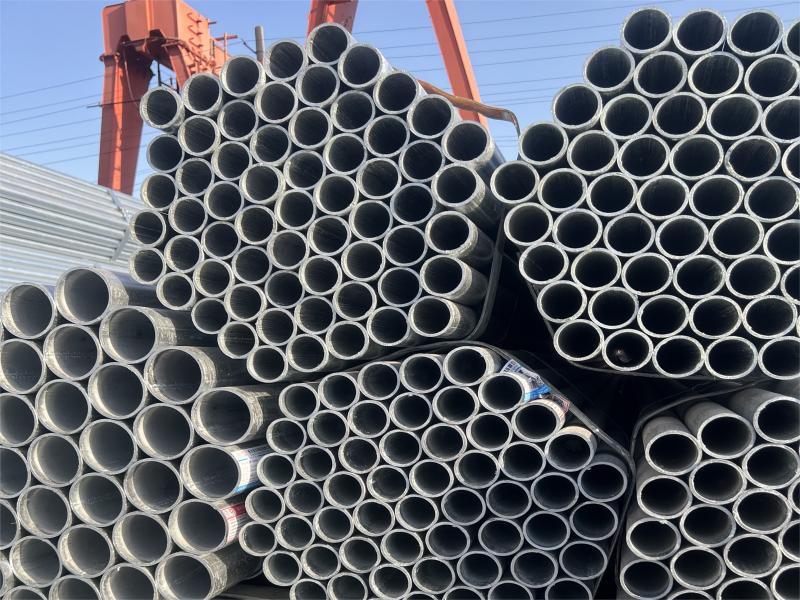
Electrogalvanizing: also known as cold galvanizing in the industry, is the use of electrolysis, the formation of uniform, dense, well combined metal or alloy deposition layer on the surface of the parts. Compared with other metals, zinc is a relatively cheap and easy plating of a metal, a low value corrosion prevention electroplating, is widely used to protect iron and steel parts, especially to prevent atmospheric corrosion, and used for decoration. Plating techniques include groove plating (or hanging plating), roll plating (suitable for small parts), blue plating, automatic plating and continuous plating (suitable for wire and strip). Principle: chemical oil removal → hot water washing → water washing → electric oil removal → hot water washing → water washing → strong corrosion → water washing → electrogalvanized iron alloy → water washing → light out → passivation → water washing → drying.
Cold Galvanizing Process
Steel surface treatment
Cold galvanized coating is mainly anticorrosive through the principle of electrochemical, so we must ensure that the zinc powder and steel full contact, electrode potential difference, so the surface treatment of steel is very important.
(1) New steel surface treatment
Before spraying cold galvanized, mechanical derusting (sand blasting, shot blasting, etc.) should be selected to make the surface cleanliness of the steel reach ISO 85O1-1 Sa 2.5, equivalent to GB 8923 Sa 2.5. Its text is defined as: "After mechanical rust removal, the surface of the steel is free from oil, rust, oxide skin and other dirt, or only leave slight traces; 95% of the steel surface is hit by steel pellets (sand), exposing the metallic sheen."
For roughness, another index of surface treatment quality, different cold galvanized materials have different requirements for roughness. In the construction specification of Zinga, the average roughness Ra= 12.5, that is, the roughness Rz=55 ~ 75 microns. In the construction instructions of "Strong Zinc" and "Robaru", the requirements for roughness are slightly lower, Rz=40~60 microns.
If cold galvanized film, as an anticorrosive coating, the surface roughness can be controlled slightly smaller, to ensure the thickness of cold galvanized coating; When cold galvanized is used as the bottom layer of heavy anticorrosive coating, the total supporting coating thickness is greater than 180 microns, in order to ensure the adhesion of the whole coating, the steel surface roughness Rz should be greater than 60 microns.
(2) Surface treatment of old steel
It is also best to use the method of sand blasting to remove the old paint film, rust spots, steel surface has a certain roughness. If conditions are limited, manual grinding and wind (electric) tools can also be used for rust removal. The rust removal grade standard reaches ISO 8501-1 St level 3, that is, very thorough hand and power tools rust removal. Its literal definition reads: "The surface shall be free of visible grease and dirt, and almost free of unstable oxide, rust, old coating and foreign matter. The surface should have the luster of metal substrate ". Different brands of cold galvanized materials have different requirements for the grade of surface treatment. Such as Belgium Zinga before coating, allow about 5% of the steel surface slight corrosion area; When ROVAL is polishing the steel surface to st 3 level, it has been tested by China Shipbuilding Technology Research Institute. The adhesion of ROVAL coating of 60 ~ 80 microns (dry film thickness) to steel is very good, which can reach 6.1MPa by pulling apart method.
(3) Surface treatment of electric weld
Electric weld is the most easily corroded part of steel component. Practice has proved that cold galvanizing is an economical and effective method to repair the weld of steel member with arc spraying zinc (aluminum) and hot dipping zinc coating after welding installation. However, before repair, the surface of the weld must be carefully removed "splash", "welding slag" and "welding smoke", remove grease, weld detection agent and other dirt, and polish to ISO 8501-1 St 2 level. After finishing the surface treatment, coating the first cold galvanizing immediately.
Cold galvanizing(2)
Environmental protection performance
Like heavy anticorrosive coating, the production and coating engineering of cold galvanizing also involves environmental protection and occupational health and safety of construction personnel and the public, so environmental protection is also the main development direction of cold galvanizing. Cold galvanized material has excellent environmental protection performance, mainly reflected in the following 4 aspects:
(1) The ingredients do not contain Ph, cr, Hg and other heavy metals;
(2) belongs to the thick film type material, thixotropic performance is good, after full mixing, less or no diluent, you can paint the construction. Because the solid content of cold galvanized is as high as 77%, a single airless spraying can obtain a higher film thickness, reduce the volatile amount of organic solvent, reduce drying energy consumption, which is conducive to environmental protection.
(3) The test proved that the vast majority of cold galvanized solvents and diluents do not contain toluene, keones, halogenated hydrocarbons and other toxic organic solvents.
(4) Cold galvanizing is the best material to replace hot dip galvanizing and arc (hot) zinc spraying, which plays a more obvious role in reducing three wastes, reducing energy consumption and improving the social benefits of environmental protection.
Related Posts
Online Message
Leave A Message
If you are interested in our products and want to know more details, please leave a message here, we will reply you as soon as we can.


